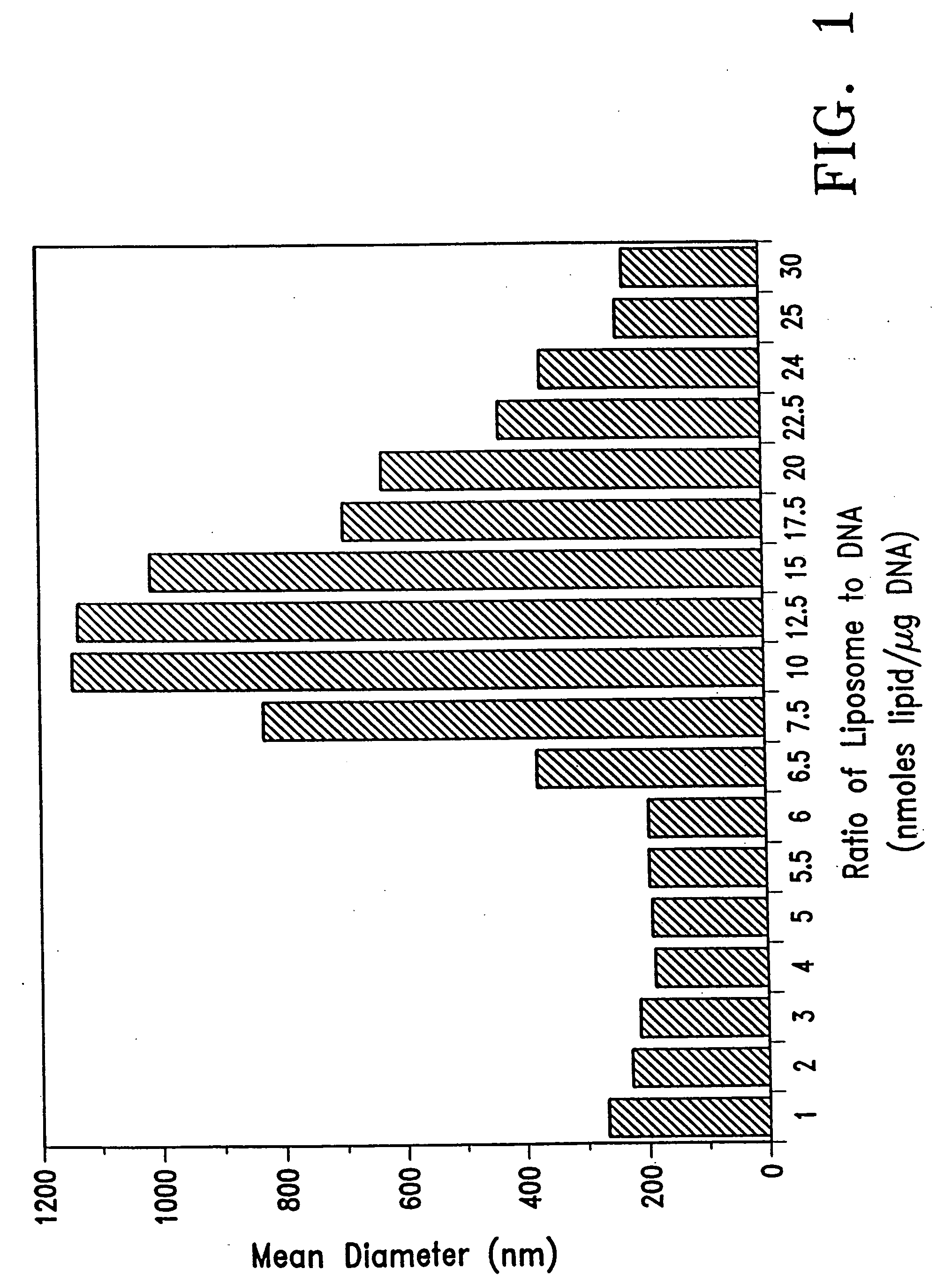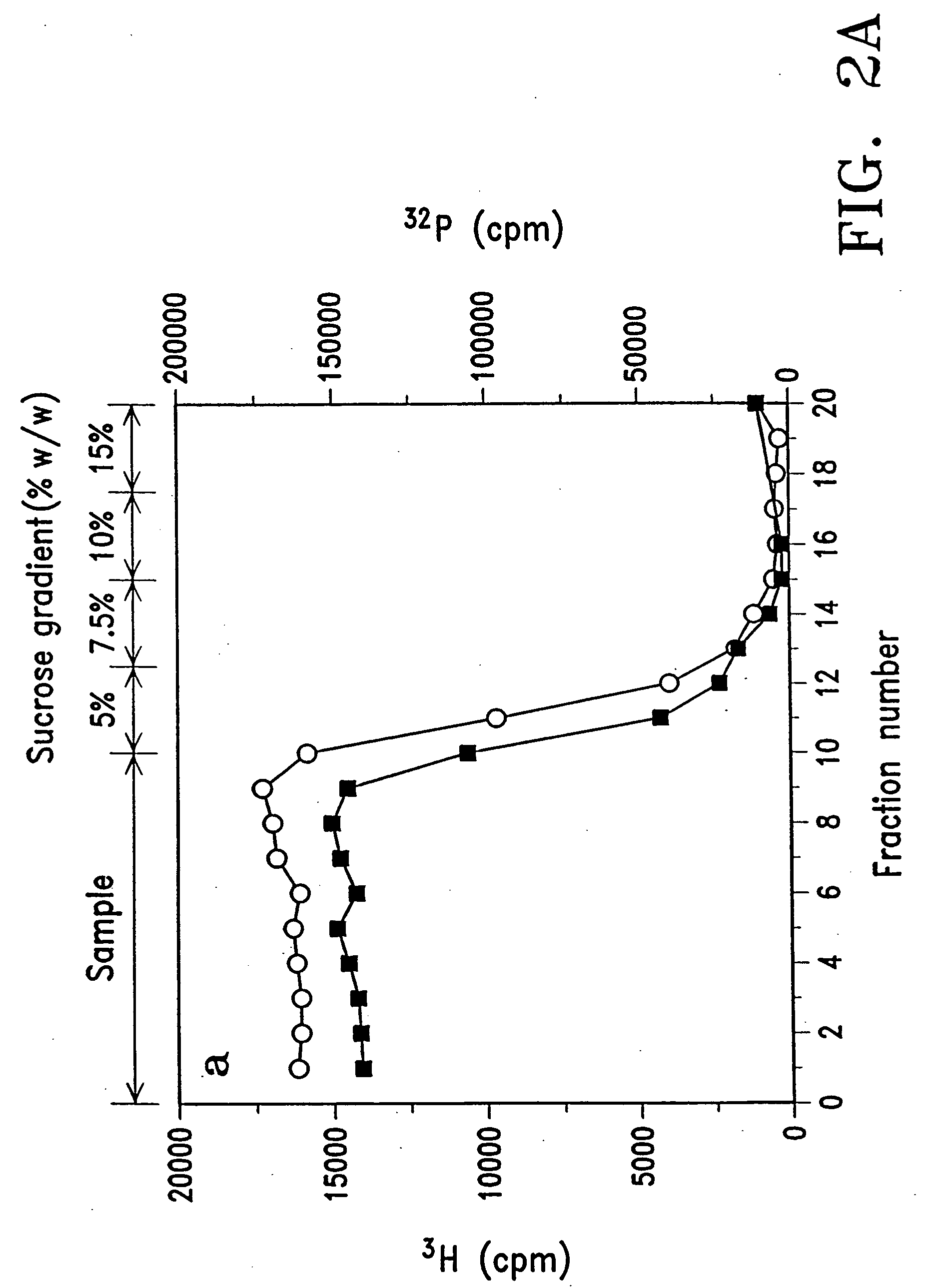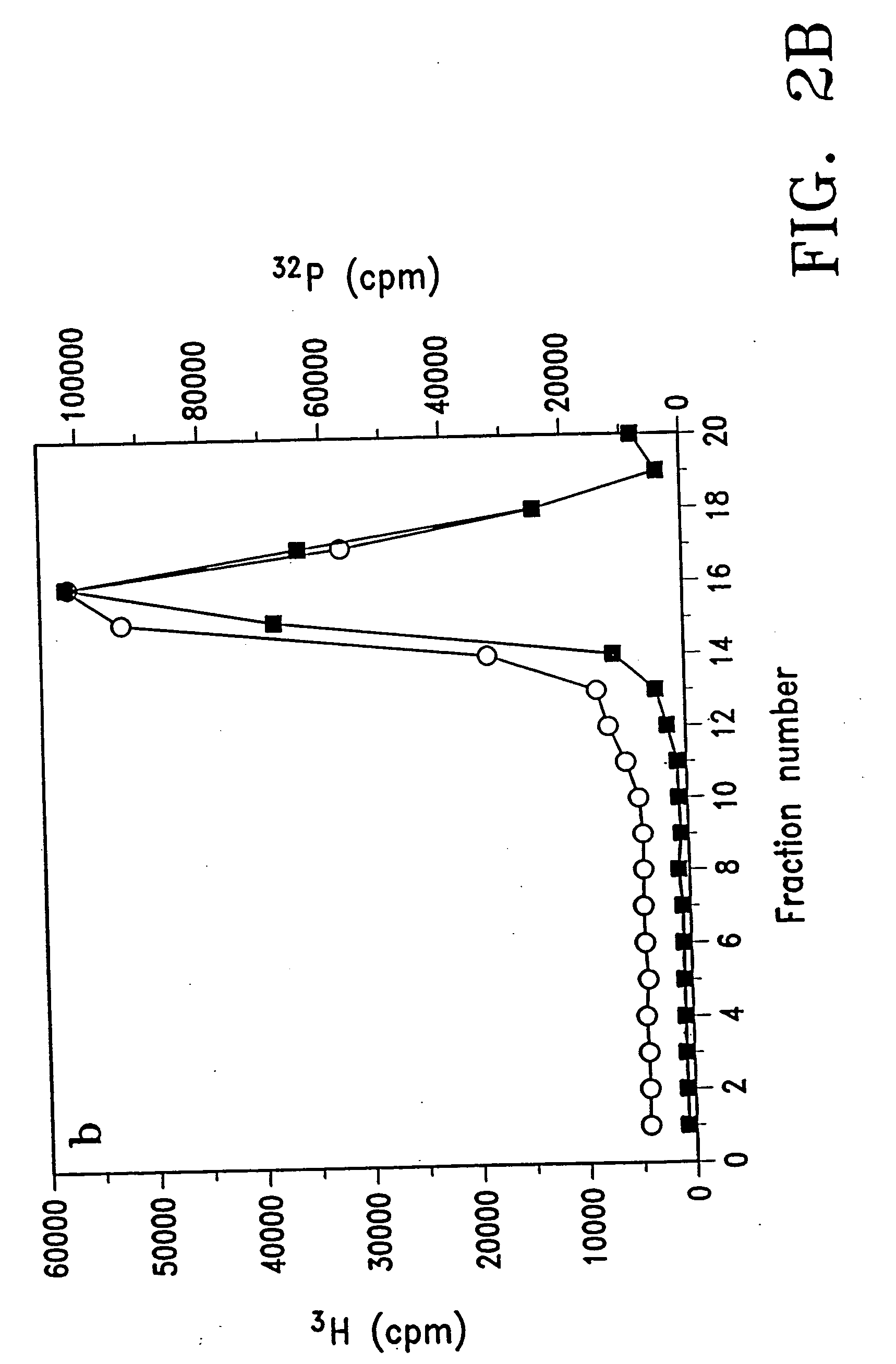Stable lipid-comprising drug delivery complexes and methods for their production
a drug delivery complex and lipid-comprising technology, applied in the field of cationic lipids, can solve the problems of large diameter complexes, inconvenient large-scale therapeutic applications, and inability to design new and effective means of delivering nucleic acids to cell targets
- Summary
- Abstract
- Description
- Claims
- Application Information
AI Technical Summary
Benefits of technology
Problems solved by technology
Method used
Image
Examples
example 1
The Size of the DNA / Lipid Complex is Determined by the Ratio of DNA to Lipid
[0085] This experiment was conducted to show that the size of the DNA-lipid complex formed by admixture changed as the ratio of DNA mixed with liposome varied. In brief, pRSVL plasmid DNA (2 μg) was mixed with varying amounts of DC-Chol / DOPE (3:2) liposomes in 2 mM Hepes buffer at pH 7.6 in a final volume of 500 μL and after 7 minutes, the size of the complex was determined with a Coulter N4SD laser light scattering particle sizer operating in the unimodel mode.
[0086] As shown in FIG. 1, large aggregates did not form when DNA was in excess (ratios of liposome to DNA less than 7) but at ratios of lipid to DNA that were charge neutral (˜10), the size of the complex reached a maximum. In addition, when the ratio of liposome-to-DNA was kept constant at 10 mmoles / μg, the size of the complex increased as both DNA and liposome concentration increased and eventually formed precipitates. However, when the ratio of...
example 2
Purification Of DNA / Lipid Complexes
[0088] When DNA was mixed with liposomes at a ratio of 1 μg / 50 nmoles, an excess of free liposomal lipids was observed to co-exist with the DNA / lipid complex. Since excess free lipids are toxic to cells, an experiment was conducted to determine if free liposomal lipids could be separated from the DNA / lipid complex by a density gradient ultracentrifugation method. In brief, free liposomes (10 μmoles of DC-Chol / DOPE (2:3) in a volume of 2 ml); free DNA (50 μg pRSVL in a volume of 2 ml) and DNA / lipid complex formed by mixing 20 μmoles DC-Chol / DOPE (2:3) and 0.4 mg pRSVL-plasmid DNA (50 nmoles / μg) were each centrifuged for 30 minutes at 4° C. at 100,000 g over a gradient consisting of 0.5 ml each of 5%, 7.5%, 10% and 15% sucrose (W / W). Fractions of 200 μl were then collected from the top to the bottom of the tube and assayed for the distribution of DNA marker (32P, ▪) and lipid marker (3H, ◯). FIGS. 2A and 2B show the results of typical separations o...
example 3
Physical Stability of Purified Lipid / DNA and Lipid / PLL / DNA Complexes
[0089] DNA / lipid complexes were formed by mixing 20 μmoles of liposomes of various DC-Chol / DOPE compositions (see Table 1) with 0.4 mg pRSVL plasmid DNA at a ratio of 1 μg DNA / 50 nmoles lipid. Lipid / PLL / DNA complexes were formed by mixing 4 mmoles of liposomes of various DC-Chol / DOPE compositions with 1 mg PLL (MW=3000) and 0.4 mg pRSVL plasmid DNA. Both complexes were then purified from free lipids, free DNA and free PLL by sucrose gradient centrifugation as described in the Methods section. The peak fractions were collected and pooled. Pooled samples were then assayed for diameter immediately after collection (0 days) or after storage in 10% sucrose at 4° C. for 120 days. Table 1 shows the results of these assays.
TABLE 1Physical stability of purified lipid / DNA andlipid / PLL / DNA pre-complexesPurifiedLiposomecomplexcompositionPLLRatio of lipid / Recovery(DC-chol / (μg / μgSize (nm)DNAof DNADOPE)DNA)Day 0Day 120(nmoles / ...
PUM
| Property | Measurement | Unit |
|---|---|---|
| diameter | aaaaa | aaaaa |
| diameter | aaaaa | aaaaa |
| volume | aaaaa | aaaaa |
Abstract
Description
Claims
Application Information
 Login to View More
Login to View More - R&D
- Intellectual Property
- Life Sciences
- Materials
- Tech Scout
- Unparalleled Data Quality
- Higher Quality Content
- 60% Fewer Hallucinations
Browse by: Latest US Patents, China's latest patents, Technical Efficacy Thesaurus, Application Domain, Technology Topic, Popular Technical Reports.
© 2025 PatSnap. All rights reserved.Legal|Privacy policy|Modern Slavery Act Transparency Statement|Sitemap|About US| Contact US: help@patsnap.com



